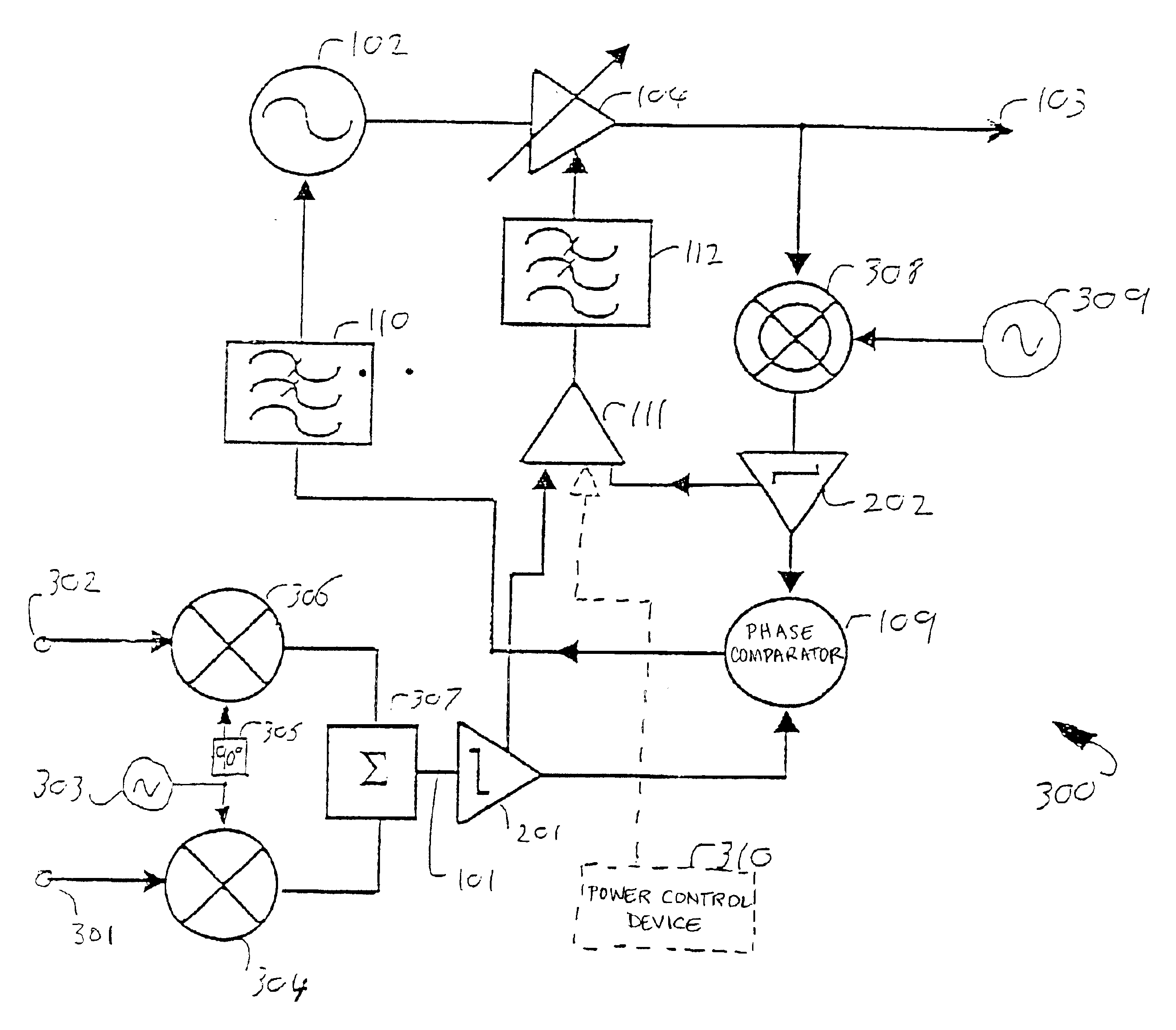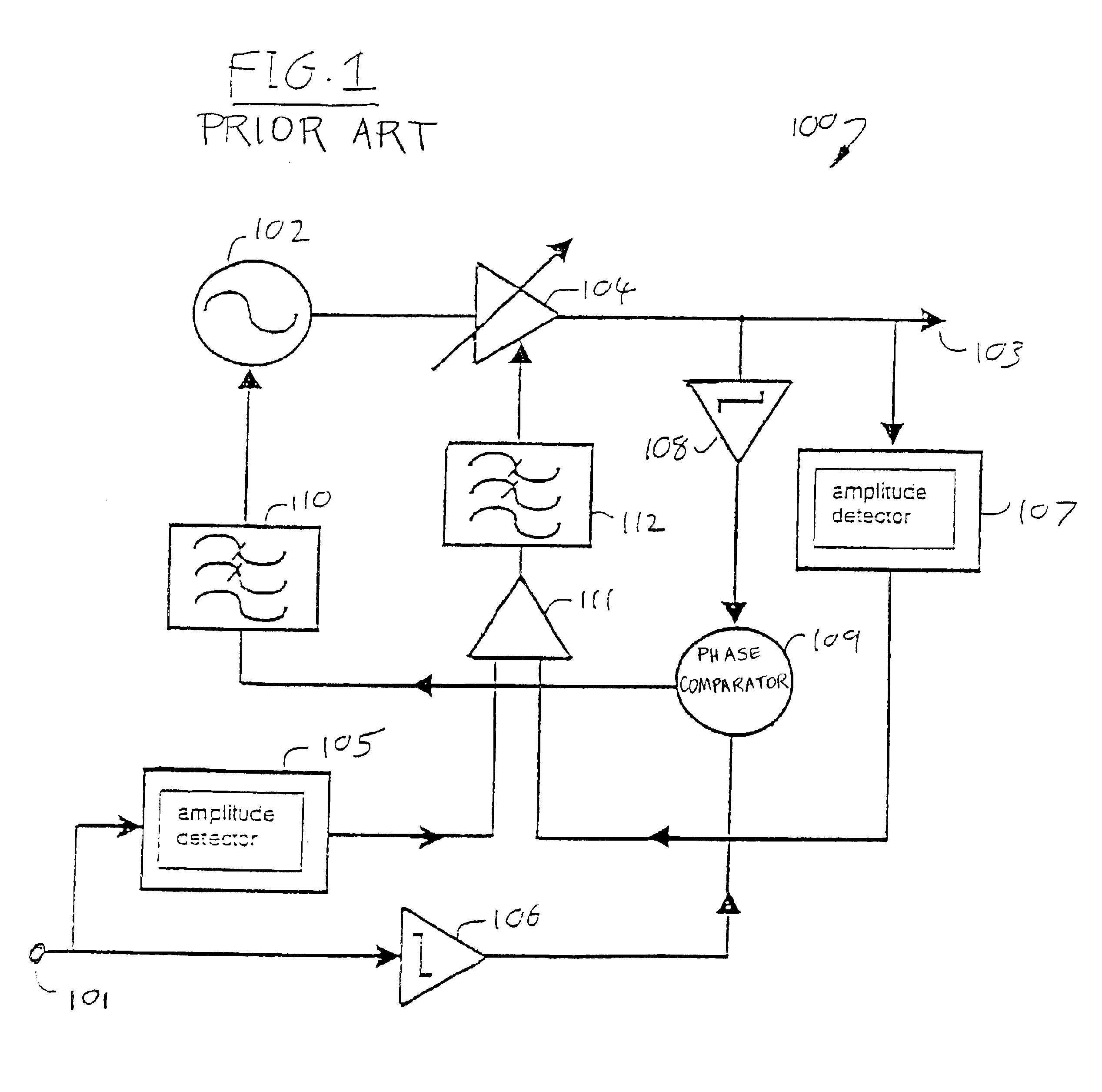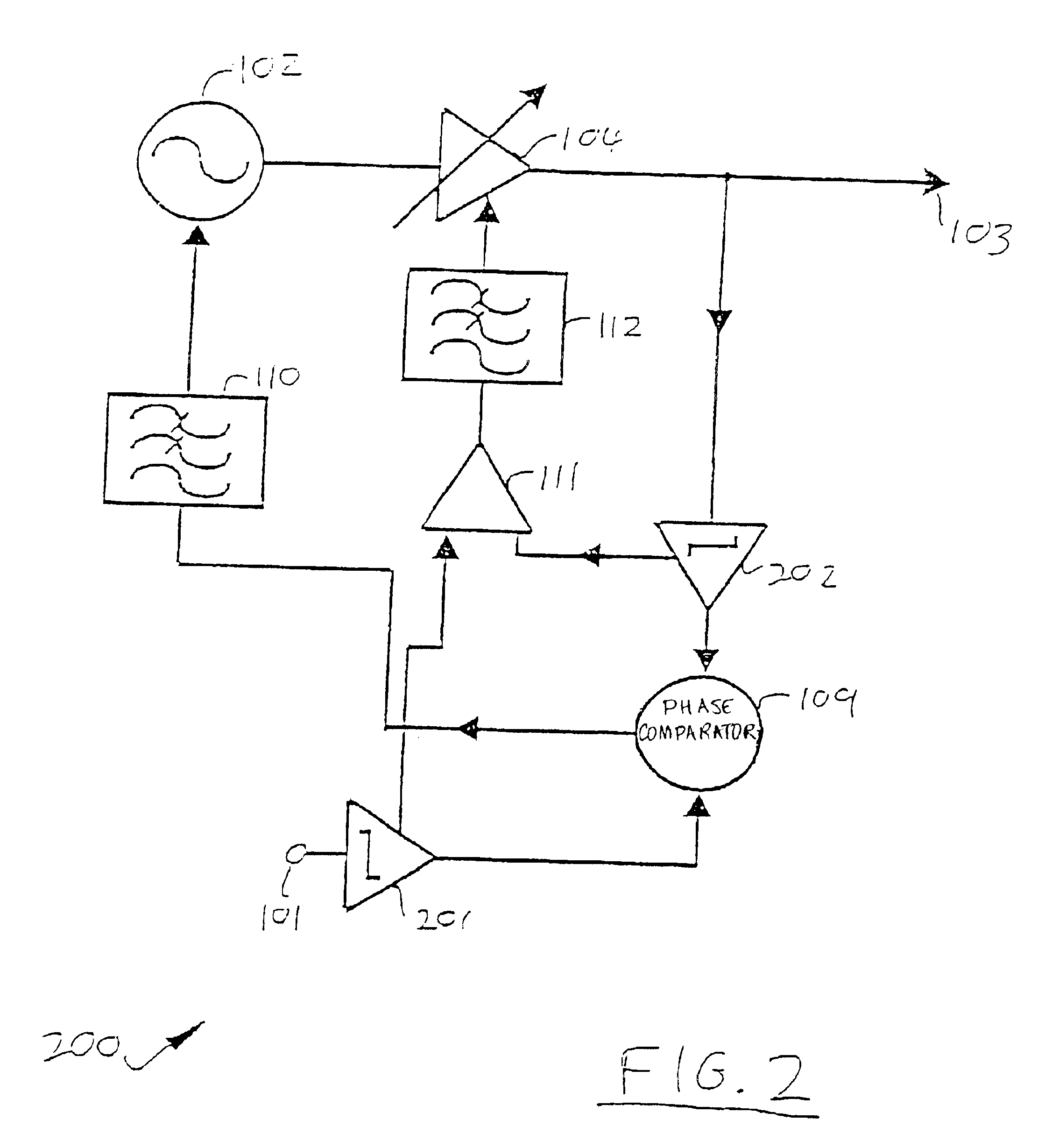Polar loop transmitter
a transmitter and loop technology, applied in the field of polar loop transmitters, can solve the problems of increasing distortion at low instantaneous signal levels, adding unwanted phase modulation to output signals,
- Summary
- Abstract
- Description
- Claims
- Application Information
AI Technical Summary
Benefits of technology
Problems solved by technology
Method used
Image
Examples
Embodiment Construction
Reference now will be made in detail to the presently preferred embodiments of the invention. Each example is provided by way of explanation of the related technology, which is not restricted to the specifics of the examples. In fact, it will be apparent to those skilled in the art that various modifications and variations can be made in the present subject matter without departing from the scope or spirit of the subject matter. For instance, features illustrated or described as part of one embodiment, can be used on another embodiment to yield a still further embodiment. Thus, it is intended that the present subject matter cover such modifications and variations as come within the scope of the appended claims and their equivalents.
In FIGS. 2 and 4, certain reference numerals are the same as those used in FIG. 1 for like elements.
Referring to FIG. 2, a polar loop transmitter circuit arrangement 200 in accordance with the invention has, in place of the amplitude detectors 105, 107 an...
PUM
 Login to View More
Login to View More Abstract
Description
Claims
Application Information
 Login to View More
Login to View More - R&D
- Intellectual Property
- Life Sciences
- Materials
- Tech Scout
- Unparalleled Data Quality
- Higher Quality Content
- 60% Fewer Hallucinations
Browse by: Latest US Patents, China's latest patents, Technical Efficacy Thesaurus, Application Domain, Technology Topic, Popular Technical Reports.
© 2025 PatSnap. All rights reserved.Legal|Privacy policy|Modern Slavery Act Transparency Statement|Sitemap|About US| Contact US: help@patsnap.com



